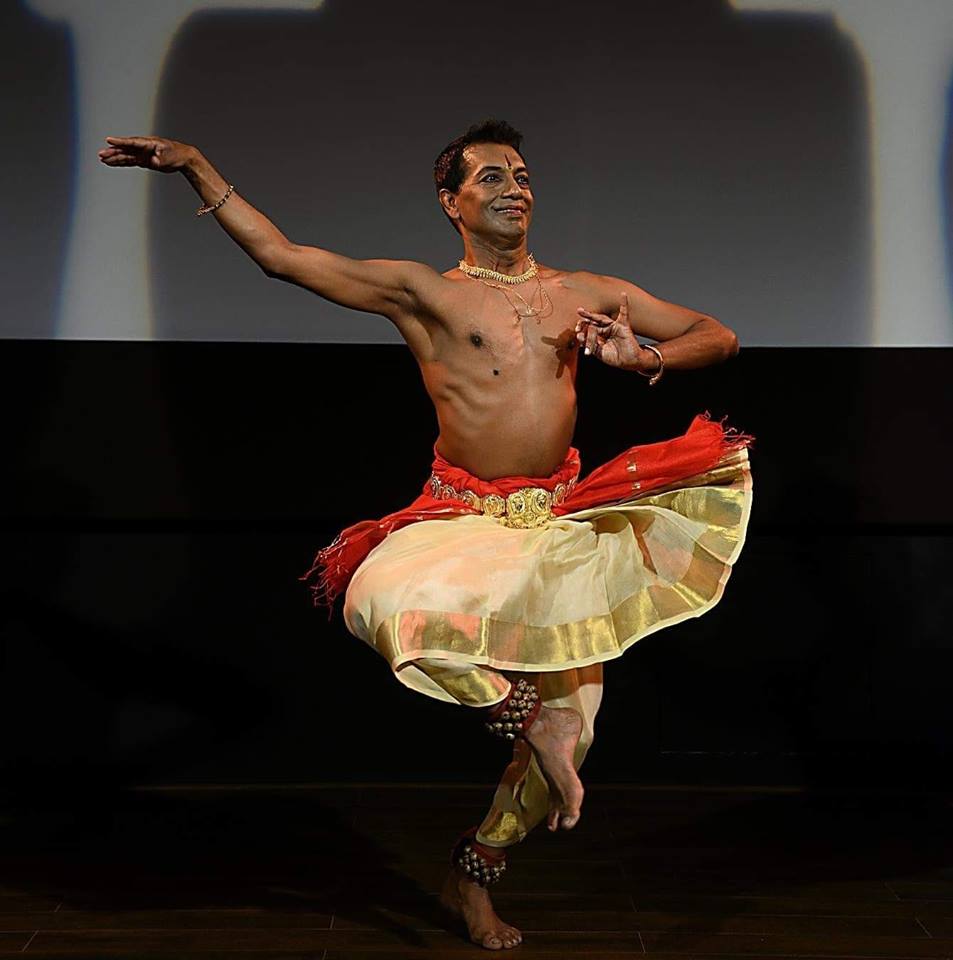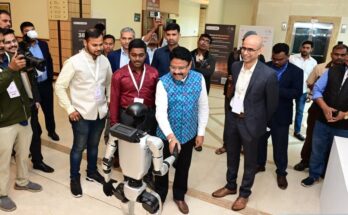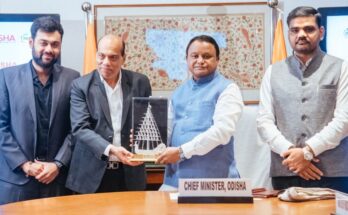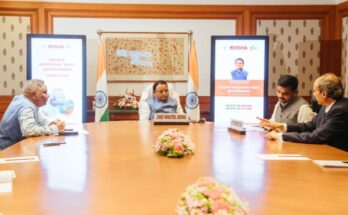By Leela Venkataraman
The word ‘abhinaya’ so loosely used in discussion on dance, is often misunderstood, its connotation not grasped by most people. Expressional dance is another term used – again a misnomer because all dance is an expression.
Abhinaya does not refer to a word for word translation of the sahitya or poetic content used as the base of a composition, as much as an interpretation of the same. If one is only going to mime through gestures what the sahitya already mentions, then dance becomes merely a dumb show repetition through movement of what is expressed in prose or poetry in the sahitya/ poetry/ lyric used.
The art of abhinaya is meant to be much more. It is an elaboration of the poetic word and needs to create its own poetry through the medium of expression. Which means that apart from the text, it is the sub-text (flowing from and suggested by the main text), which will form a large part of the abhinaya, and here it is the art of suggestion that is paramount.
After the sabdaartha (word-meaning) comes the bhaavaartha (the emotional content) in the elaboration of the text. Again this elaboration to-day often takes the form of storytelling through a narrative technique which is easy. But it has to go beyond that, for interpretation of sahitya should comprise elaboration which expands on a statement in the sahitya without taking recourse to an episodic treatment which, resorted to too often, is not considered excellence in abhinaya.
I am always reminded of the suggestive methods used to convey the essence of a situation in the Ramayana series of Rukmini Devi, which took Valmiki’s Ramayana poetry as the base. In the swayamvara scene with suitors from different lands arriving to try their hand at breaking Shiva’s Bow and earning the hand of the beauteous Sita, I cannot forget how just one look conveys what type of character Ravana, one of the suitors, is.
The background music of Valmiki’s poetry beautifully sung, goes on – the crackling excitement in the air, having all eying the Bow – each with a different expression. Ravana clad in a blood red skirt, with an elaborate crown, sits in a square posture his hands folded at the chest, staring into space – his unblinking eyes not bothering to exchange even a glance at the others, his arrogant aloofness suggesting a supreme confidence wherein the task laid out would be child’s play.
The line sung is the same but what that line would convey to each person is different. And then in the scene where Hanuman is described as flying over the Seas crossing to Lanka, the scene before ends showing him in a posture about to take off into space.
Then in the next scene, Rama and Lakshmana exchange notes pointing out to different parts in the sky where Hanuman is supposedly crossing. The suggestion of the entire act described in the poetry is captured without any movement resembling flying, though after that as Hanuamn nears Lanka he is shown leaping from rock to rock to reach the destination. This is abhinaya.
Similarly, the fierce battle between Rama and Ravana, which hardly any dance can adequately convey, has Apsaras in Heaven looking from up above at this Herculean clash and dramatically commenting on it – and the effect on the audience is of seeing an actual battle.
In a recent Bharatanatyam performance at Bangalore’s Seva Sadan, watching Shankar Kandaswamy from the Temple of Fine Arts in Kuala Lumpur perform with his disciple Ananya Ano, the way he expanded on the lyric and textual content used as thematic base, for me represented elaboration of the poetry in the highest traditions. The start, with both dancers entering the stage, in beautiful synchronisation was through a Purappad, which comes from the temple Nagawaram tradition through a Mallari, where the impression of Shiva and Parvati in procession is captured through the insertion of a verse from Kalidasa “Vaagarthaviva sampruktau vaakarthap-pratipattaye..” (which is not mimed, but the meaning of which is contained in the complete togetherness of the two dancers in their movement – that just as the word and its meaning cannot be separated, Parvathi and Shiva are inseparable.)
The varnam actually portrays the devotee’s statement “Aadi Shivanai kaana Aasai kondenadi” (I was desirous of seeing that Primordial Shiva, oh, sakhi). The word Aadi can incorporate many meanings and the dancers interpreted this Shiva as the epicentre of the Universe – “Aangikam Bhuvanam yasya vaachikam sarvavaangmayam” clothed in the garment of the entire Cosmos, with stars and Moon as his ornaments.
They capture him in movement and stance depicting all his accoutrements – with the deer, Ganga –his rhythms, which are a reflection of the planets in cross rhythms. All sounds of the Universe are his. Similarly Aadi Shiva can mean that potent God who is everywhere and yet nowhere for he is formless and here the limitlessness of Shiva is expressed through ‘Parama Jyoti’ or Agni of the Lingam, which is everywhere and Vishnu as a boar and Brahma as the Swan probing into the bowels of the Earth and soaring into the Skies respectively, could not detect either the starting or ending point of the Agni (Fire) and without actually going into a narrative all this gets conveyed through fleeting images.
The Lord as Ardhanariswara, and the fire of love which, recognises neither fear nor ‘lajja’ are all also portrayed. Then Kandaswamy took up for treatment the composition of Papanasam Shivan “Enna tawam seydano, Yashoda” in raga Kapi . The poet here marvels at the kind of prayers that Yashoda must have offered to have acquired the great fortune of becoming the foster mother of the God Child Krishna himself, to feed him, to watch him grow, to play with him (something the God child’s biological mother was denied, which is not mentioned in the text though implied for all who know the epic of Krishna). Instead of a straight forward abhinaya treatment, what the dancer tried was to imagine these words of the poet as coming from the lips of the biological mother Devaki – making it into what is known as ‘Devakiyin Pulambal’ (the lament of Devaki).
New Thrust
Now this gave a whole new thrust to the interpretation, which along with the joys of motherhood enjoyed by Yashoda had to reflect in the abhinaya the pain of Devaki, who for no fault of hers was denied this normal mother’s privilege. The last part of the abhinaya segment in the recital dealt with Krishna as the unequalled Lord of feats. He is worshipped with epithets “Krishnaya, Vasudevaya, Devaki Nandanaya”, etc. Brahma and Vishnu filled with envy ordained torrential rains on Gokul and Krishna comes to the rescue holding aloft the mountain on the tip of his little finger, saving all its inhabitants from a watery grave. Then dealing with Krishna’s romance with Radha, there is a play on the word Radha, which when inverted becomes Dhara, which means flow and finally it is Aadhaara, which means the base or foundation.
And the conclusion was with the line from the Bhagavat Gita “Ananyashchintayantomaam ye janafparyupasate, Teshaam nityabhiyuktaanaam yogakshemam vahaamyaham”. Set to raga Behag, Krishna who is the be all and end all of life declares that he will take care of the welfare of all those committed seekers who worship him without distraction.
This type of stretching of a word or line in sahitya and playing with it no doubt calls for a lot of reading and knowledge. But it is a glimpse into the possibilities of meanings flowing from a verse or sahitya line – and how the minimal that is given can be elaborated to convey various meanings.
More simple but very indicative of the strength of communication through skilful abhinaya, is what Meera Srenarayanan demonstrated in her recital for the Music Academy festival, while presenting the varnam “Danike Tagujanara”composed by Tanjore Sivanandam Pillai in the ragam Todi. First performed by the devadasi Mannargudi Meenakshi in the royal court of the Tanjore Maratta ruler Shivaji II for whom she nursed feelings of love, the varnam she presented has sahitya pleading the case of her sakhi as the most fit companion for the King, while in reality she is actually demonstrating her own feelings for him. And the manner in which young Meera caught this tongue-in-cheek attitude in her abhinaya, drew highest praise from the audience. Even a backward glance of the head and every look from her eyes, spoke aloud of her own feelings. And the beauty of her recital lay in the fact that right through the rhythmic links between interpretative passages, and till the conclusion of the half hour varnam, she maintained that dominant state-of-being or sthayi, which is the hallmark of an abhinaya composition.
Every elaboration has to further strengthen the main mood communicated by a composition. Which is why, evolving into a worthwhile dancer requires reading and broadening one’s sensitivity to poetry and music. Abhinaya cannot be skin deep, for it needs to involve the inner dancer.
Abhinaya modernised
Like everything else in dance, abhinaya too in today’s scenario is assuming different forms. Recently watching Grand Dame of Kathak Kumudini Lakhia’s group production of ‘Meraki’ (Greek word, which means to do something with passion), I wondered about the way in which words in the thumri compositions were treated.
Music by Abhijeet Pohankar and Bernard Schimpelsberger was a blend of Hindustani and world music, the latter contributing a lot of sound effects to the performance creating moods. Here the heroine (Kumudini’s senior dancer Sanjukta Sinha) pensive and longing is being told by her friend to follow her heart. And with a lot of hand movements in the air, and turns and what one feels are ways of persuading a friend to shake her out of the brooding mood, there is no attempt to specially bring out gestures or action to suit the words of the thumri – though one gets the idea of what the tenor of the exchange could be.
While the sakhi tries the art of persuasion, the heroine, with minimal action, retains the same mood. The song sung in the background creates the mood, but is not dealt with in detail. There is no feeling of a completed story line, which comes through in the entire work. The entire production makes the audience experience another type of emotion which stems from pure rhythm, at which the dancers are wizards. The male dancers in particular in parhant (reciting the rhythmic syllables) and through sheer virtuosity of footwork, make this into a kind of conversation in different moods. And the space in between two dancers in the group is filled with a kind of tension and electricity, which conveys its own moods. So here is just pure rhythm which comprises meaningless sounds, in the pauses and accenting of certain syllables evoking bhav and moods with sounds but without words. Many of today’s Kathak dancers have gone beyond traditional boundaries prescribed by their gurus.
The performer of today needs to be versatile in thinking of ways of communicating whatever message he or she wants to. Abhinaya can be evoked through silence, though meaningless sounds and of course through the poetry of words. What seems limitless in possibilities is also an area where wise choices have to be made.
(Venkataraman is one of the leading art critics of India)




